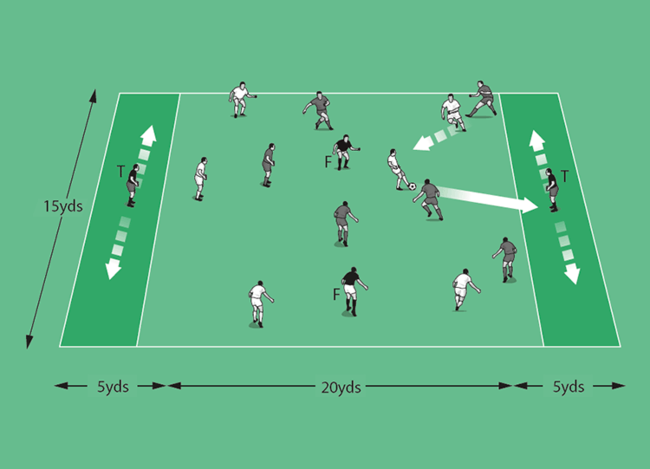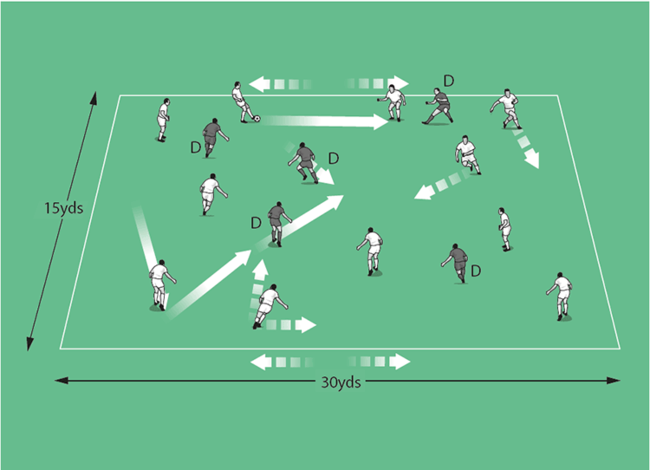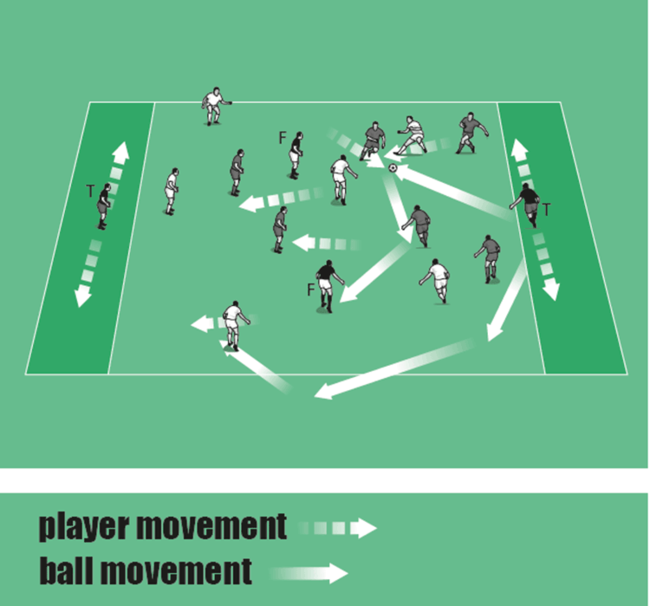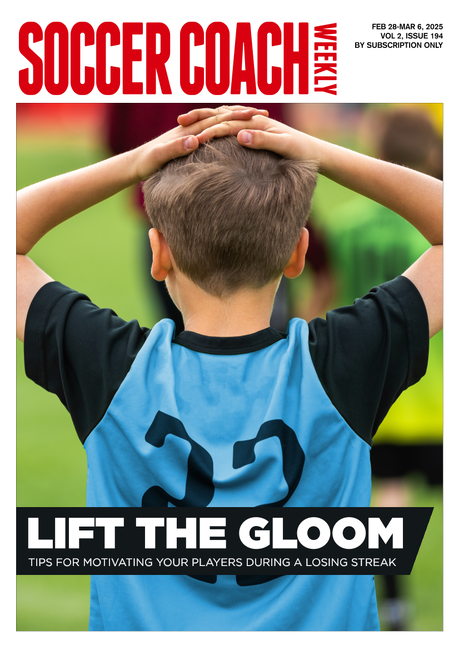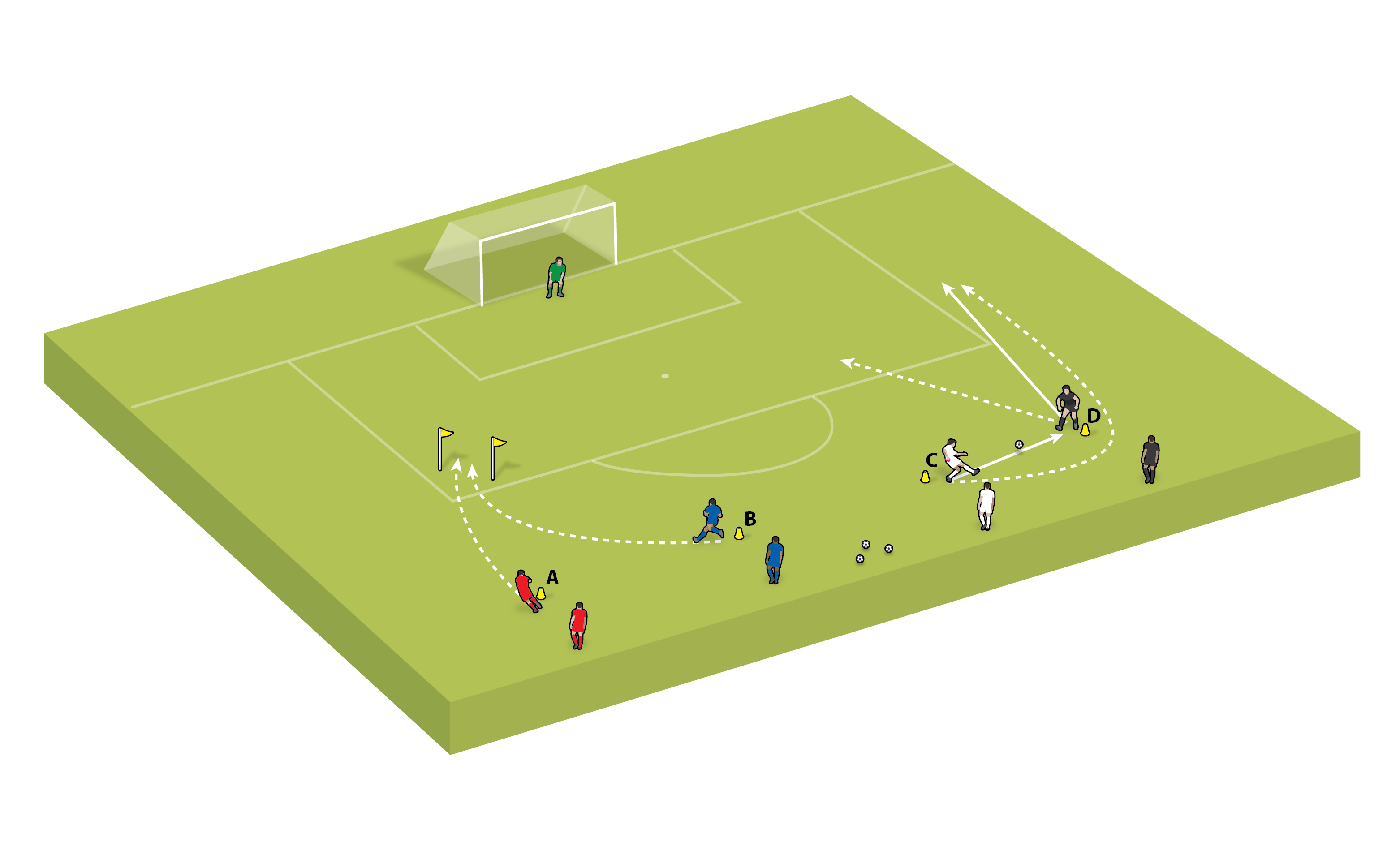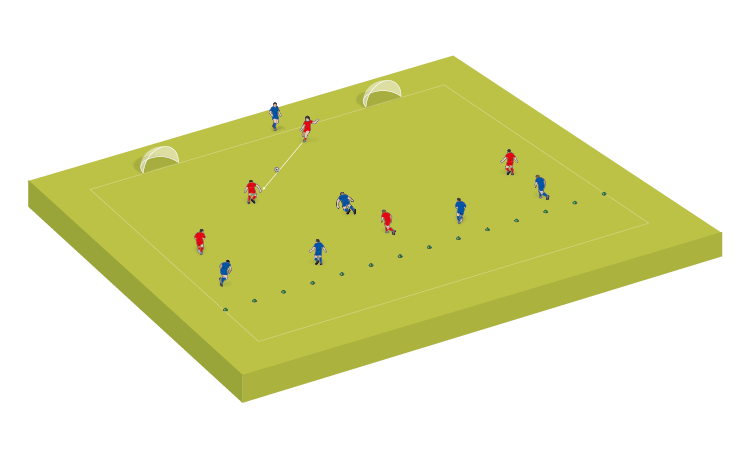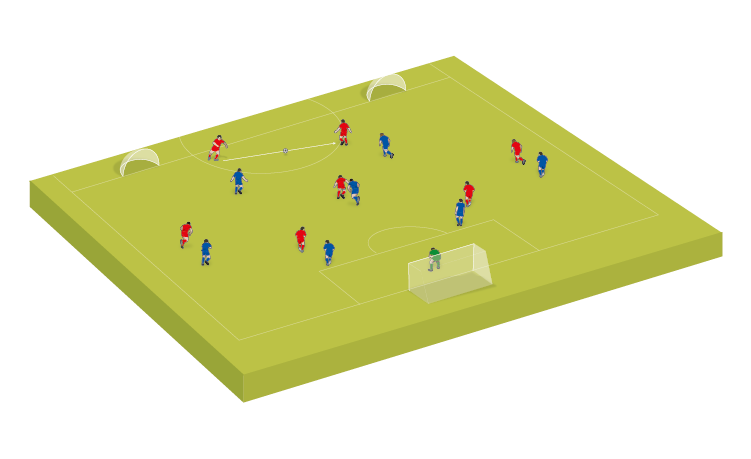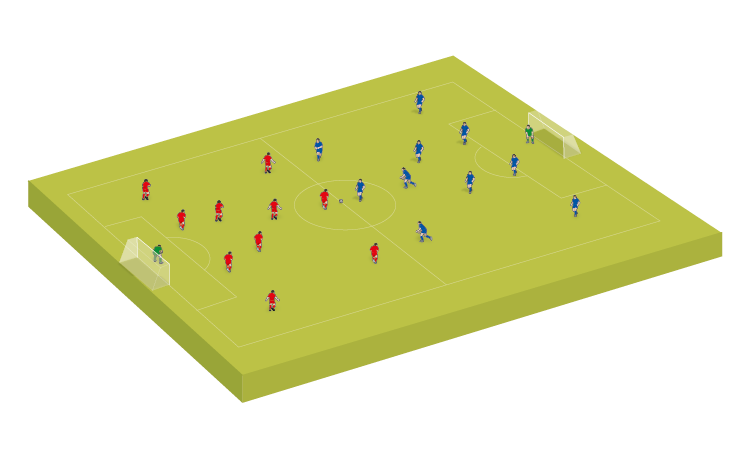Possession and penetration
Soccer Drillsby Colin Reid
Here’s a session, divided into two parts, that benefits players in three core elements. At the heart of this is possession; but keeping the ball is only really useful if players know what to do with it, and that’s where patience and penetration come into play.
Here’s a session, divided into two parts, that benefits players in three core elements. At the heart of this is possession; but keeping the ball is only really useful if players know what to do with it, and that’s where patience and penetration come into play. This practice also allows players to rehearse passing, receiving, turning, screening, one-twos, running with the ball and overlaps.
Non-directional practice
This is an ideal start for getting younger players using combinations, without having to get the ball to a designated target. It really cements the basics of support play, with overloads helping to create confidence in maintaining possession. Set up so that attackers have a strong overload (I use 11v5 in a 30x15-yard area, but you can use a smaller area with a 9v4 or a 7v3). Both teams must try to win the ball and keep possession of it – they’ll do this by supporting and communicating well with team mates at all times. Play for five minutes, switching players so that all get to work with and against the overload.
Directional practice
Now, the objective for both teams is to pass the ball into either of the target players, who are positioned in 5-yard channels on the left and right. Moving into a directional practice replicates real game demands of retaining possession and finding an end target. In the example given this is 6v6 in the middle, plus two floaters who always play with the team in possession (to make 8v6). If a successful pass is made into a target player, he releases back to the team previously in possession and the other end is attacked. If play is turned over, the other team can now use the floaters in an 8v6, and attempt to feed the ball to either target man. Play for five minutes.
Look for the creation of space (wide and deep), as individuals and as a team. Pass selection is important, with the focus on accuracy, weight and timing of the release.
How to play it
Non-directional practice
This is an ideal start for getting younger players using combinations, without having to get the ball to a designated target. It really cements the basics of support play, with overloads helping to create confidence in maintaining possession. Set up so that attackers have a strong overload (I use 11v5 in a 30x15-yard area, but you can use a smaller area with a 9v4 or a 7v3). Both teams must try to win the ball and keep possession of it – they’ll do this by supporting and communicating well with team mates at all times. Play for five minutes, switching players so that all get to work with and against the overload.
Directional practice
Now, the objective for both teams is to pass the ball into either of the target players, who are positioned in 5-yard channels on the left and right. Moving into a directional practice replicates real game demands of retaining possession and finding an end target. In the example given this is 6v6 in the middle, plus two floaters who always play with the team in possession (to make 8v6). If a successful pass is made into a target player, he releases back to the team previously in possession and the other end is attacked. If play is turned over, the other team can now use the floaters in an 8v6, and attempt to feed the ball to either target man. Play for five minutes.
Technique and tactics
Look for the creation of space (wide and deep), as individuals and as a team. Pass selection is important, with the focus on accuracy, weight and timing of the release.
Coaches Testimonials

Gerald Kearney, Downtown Las Vegas Soccer Club

Paul Butler, Florida, USA

Rick Shields, Springboro, USA

Tony Green, Pierrefonds Titans, Quebec, Canada
Soccer Drills
Discover the simple way to become a more effective, more successful soccer coach
In a recent survey 89% of subscribers said Soccer Coach Weekly makes them more confident, 91% said Soccer Coach Weekly makes them a more effective coach and 93% said Soccer Coach Weekly makes them more inspired.
*includes 3 coaching manuals
Get Weekly Inspiration
All the latest techniques and approaches
Soccer Coach Weekly offers proven and easy to use soccer drills, coaching sessions, practice plans, small-sided games, warm-ups, training tips and advice.
We've been at the cutting edge of soccer coaching since we launched in 2007, creating resources for the grassroots youth coach, following best practice from around the world and insights from the professional game.
